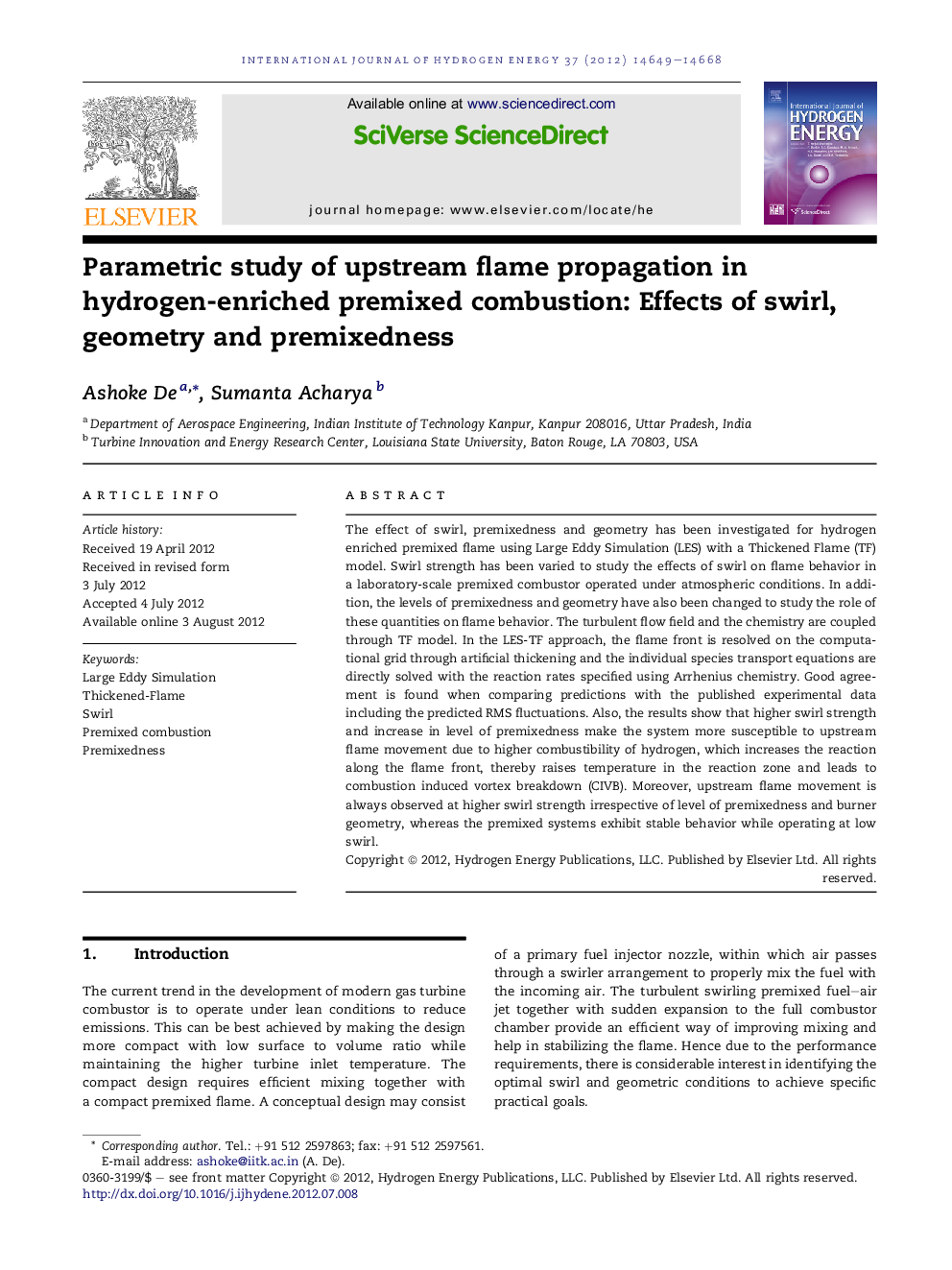| Article ID | Journal | Published Year | Pages | File Type |
|---|---|---|---|---|
| 1274814 | International Journal of Hydrogen Energy | 2012 | 20 Pages |
The effect of swirl, premixedness and geometry has been investigated for hydrogen enriched premixed flame using Large Eddy Simulation (LES) with a Thickened Flame (TF) model. Swirl strength has been varied to study the effects of swirl on flame behavior in a laboratory-scale premixed combustor operated under atmospheric conditions. In addition, the levels of premixedness and geometry have also been changed to study the role of these quantities on flame behavior. The turbulent flow field and the chemistry are coupled through TF model. In the LES-TF approach, the flame front is resolved on the computational grid through artificial thickening and the individual species transport equations are directly solved with the reaction rates specified using Arrhenius chemistry. Good agreement is found when comparing predictions with the published experimental data including the predicted RMS fluctuations. Also, the results show that higher swirl strength and increase in level of premixedness make the system more susceptible to upstream flame movement due to higher combustibility of hydrogen, which increases the reaction along the flame front, thereby raises temperature in the reaction zone and leads to combustion induced vortex breakdown (CIVB). Moreover, upstream flame movement is always observed at higher swirl strength irrespective of level of premixedness and burner geometry, whereas the premixed systems exhibit stable behavior while operating at low swirl.
► Large Eddy Simulation (LES) coupled with Thickened Flame (TF) approach. ► H2 enriched premixed flame is simulated. ► Effect of swirl, premixedness and geometry is studied. ► Strong swirl plays a key role for upstream flame movement in H2 enriched flame.
